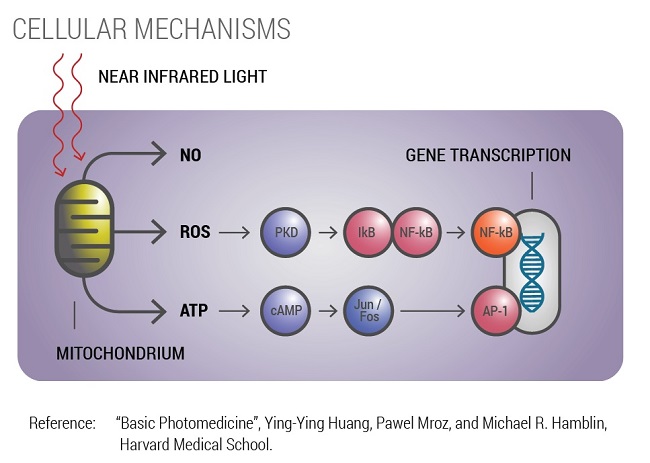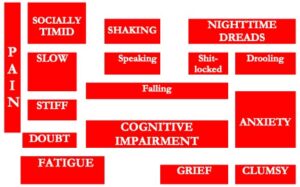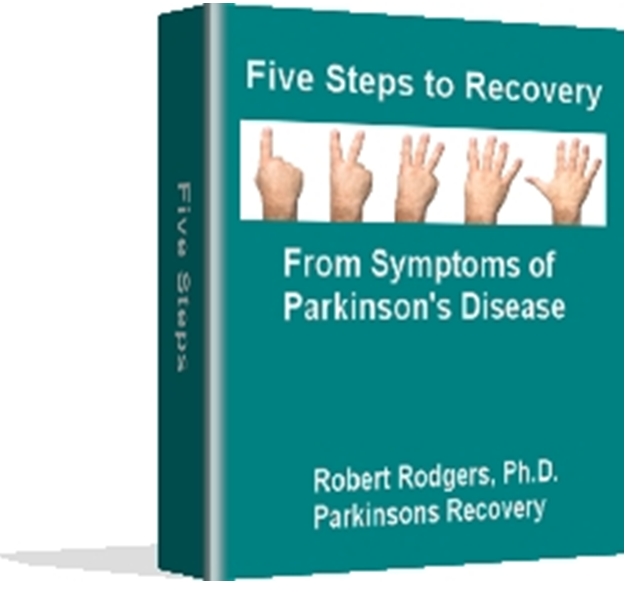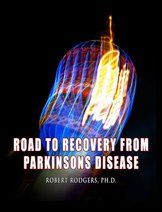- Some days it may feel like recovery is a big lie …
- Other days it may be easier to numb yourself …
For the past two decades I have focused my research program on identifying natural therapies that offer the promise of reverse the symptoms associated with a diagnosis of Parkinsons Disease. Twenty years ago there were a few natural options that helped but not many. That dismal picture has changed dramatically over the past two decades as a result of Parkinsons Recovery research.
I have now documented a number of natural therapies that members of my global audience report help them celebrate relief from their symptoms. Sometimes relief is temporary as is the case with medications. Other therapies offer more long lasting relief.
Many of the more successful therapies have been developed or invented recently. Most involve continuing improvements and changes in how they are delivered. Parkinsons Recovery memberships offer updated information about the most promising therapies available to persons experiencing neurological symptoms.
Get the support and resources you need to recover now. Join a virtual Parkinsons Recovery Support Group that meets every month and helps members identify steps they can take to reverse their symptoms
- The focus is positive.
- The intent is to support the recovery of persons diagnosed with Parkinson’s disease.
Parkinsons Recovery memberships are open for enrollment at a $10 monthly subscriptions through March 10, 2025. Clicking on the Subscribe Now Button below to join.


After years of working with persons who have the symptoms of Parkinson’s I have two observations to report. First, most people with Parkinson’s do not realize there are dozens of options that are helping people reverse their symptoms: natural therapies, herbs, alternative approaches, various healing modalities, body work – you name it. Most people are not aware that some people have had a full recovery and are symptom free today.
Second, sustaining the lifestyle changes that are needed on a day to day basis is the true challenge. Many people eventually do figure out what they can do for themselves to feel better – things like eating good food, detoxing their organs and tissues from heavy metals, pesticides and pathogens, coping better with daily stresses and healing traumas in their life. But how do you make these changes a part of your daily routine? It is not easy.
We know for the most part what we should do for ourselves to feel better. But for a variety of reasons – some conscious and some unconscious – most of us find it difficult to commit to a healthy lifestyle.
Let’s face it. We all fall off the wagon. We know what little pleasures we have always treasured that are bad for our health. We know if we eat sugar we will feel terrible. We know what happens when we eat foods we are allergic to. We all love to eat comfort food because it makes us feel happy for a few minutes. After the few minutes of bliss we feel lousy. Sound familiar? And we do it over and over again.
Why are we our own worst enemy?
Because we do not have the day in and day out support we need to stay on track. This is why I have created a membership program that encourages people to maintain a healthy lifestyle so they can manifest their commitment to feel good again and the opportunity to connect with others every month who are also traveling down the road to recovery.
What is a Parkinsons Recovery Membership?
First and perhaps most importantly I facilitate support group meetings each month with all members. Members from across the globe connect with one another using a telephone or computer. The focus of meetings each month is to discuss recent discoveries about what is helping people reverse their symptoms. Every month we all learn something new and exciting.
I interview people with Parkinsons from all over the world who are getting good relief from their symptoms. I document their stories. As a member, you get to learn about these discoveries.
I interview some people who have fully recovered. I document how they helped themselves become symptom free. As a member, you get to learn all about it.
New treatments are being discovered every month that are helping people with Parkinson’s feel better. I interview the people who are making these discoveries. I document what their approach does and how it works. As a member, you read all about it.
I do not believe for one minute that any one therapy, drug or medical intervention will “cure” Parkinson’s. No “cure” exists today. From what I now understand about Parkinson’s a “cure” that “fixes” all the symptoms of Parkinson’s will never happen in our lifetime.
Factors that cause the symptoms of Parkinson’s are multifaceted. Underlying reasons for symptoms differ from one person to the next, often significantly. Everybody’s situation is unique.
Symptoms are highly individualized. Therapies and approaches that can help you feel a great deal better are connected to the particular factors that are causing your symptoms. What helps you feel better may be of little or no help whatsoever to someone else with a diagnosis of Parkinson’s.
Membership in Parkinsons Recovery is all about having access to a hub of resources that offer you the information and support needed to feel better. There are so many exciting choices to consider. What are they?
I assemble new options for recovery on the member website. This information captures the latest updates in the same place. I report anything from anywhere that offers a shred of hope.
My goal is to provide the support everyone needs to steer a steady course on the journey down the road to recovery. Everyone has a bad day here and there. Everyone has days that reinforce the belief they will never feel better. Membership offers a healthy choice during the difficult days.
Parkinsons Recovery memberships are open for enrollment at a $10 monthly subscriptions through March 10, 2025. Clicking on the Subscribe Now Button below to join.

 $10 Per Month
$10 Per Month
Where can you go when you get discouraged?
You can now visit the Parkinsons Recovery member websites. There are twelve (12) different websites that present fresh, updated information either every weekday or every week.
Where can you go when you need the motivation to do what you know helps you feel better?
You can visit the Parkinsons Recovery member websites and encounter new information and support for your recovery every weekday.
Where can you go to be reminded what you need to do today to feel better?
You can visit the Parkinsons Recovery member websites. It is easier to steer a steady and determined course of recovery when you travel together with others who are also on a journey to health and wellness.
I created the twelve (12) unique Parkinsons Recovery member websites to provide …
- Resources that offer ideas and suggestions about what you can do to feel better. Everywhere I look – the internet or health care providers or families affected by Parkinson’s – I am overwhelmed with one negative thought form after another. Most people believe Parkinsons is a “degenerative” disease. Once you get it – you are destined to get worse. Guess what? It is not true. I believe words like “degenerative” are prophetic for those who believe they are true. If you believe you are destined to feel worse, you will feel worse. If you believe you will feel better, you will feel better. The secret is out. Our thoughts and beliefs determine our future. My research reveals that the belief Parkinsons is “degenerative” is entirely untrue. It is possible to feel better. It is possible to find good relief from symptoms. People are doing it now. I have been documenting their stories of recovery.I have not found a large number of persons yet who have fully recovered, but there are people out there who have succeeded. Many others have succeeded in reversing many of their symptoms.
I created the Parkinsons Recovery membership to offer …
- Hope to every one who has the symptoms of Parkinson’s that it is possible to feel better. What works for someone else may fizzle for you. Then again, it may be exactly what you need to start feeling better. When you begin to feel better, you will have more strength and motivation to do everything that is needed to become healthier with each passing day.
I created the Parkinsons Recovery membership to spread …
- Stories of people who have successfully found therapies and approaches that offer relief from their symptoms. Nothing like this exists anywhere. All I encounter out in internet searches is gloom and doom about Parkinson’s. There is no reason to be pessimistic. The body is out of balance. It happens. It simply needs a little extra support to get back on track. What must you do for yourself to make this happen? Opportunities for healing are posted every week on some of the member websites and every weekday on others. It is exciting for members to be part of a growing community of people who are proving to themselves, their families and their health care providers that the most exciting times of their lives are yet to come. The end of life is not around the corner. The beginning has just arrived.
What happens when Peter Graves visits the Parkinsons Recovery member websites? He …
- Receives a regular update from me every week on recent discoveries that are helping people reverse their symptoms –How do I know what is helping people recover? I am a researcher so some of my discoveries are derived from the research literature. Most, however, come through interviews I have with people with Parkinson’s symptoms who tell me what helps. I document what people say. I talk with national experts (medical doctors, naturopaths, psychologists, physical therapists, counselors, etc.) who explain exactly how their approaches, therapies and treatments work and why they are helping people with Parkinsons. I document these reports.
- Gets a preview each week of a new technique, therapy or exercise to improve balance and prevent falls. Thanks to the hundreds of interviews I have conducted with people who have amazing and useful suggestions about how balance can be improved and falls can be prevented, I have accumulated an impressive body of great suggestions. Each week, I present a suggestion or idea you will find fascinating. Believe me when I say the suggestions really will help improve mobility if you take them seriously and “run with them.”
- Experiences new meditations every weekday – People tell me stress aggravates their symptoms. One way to reduce stress is to meditate. There are many different ways to meditate to be sure. One way that works for many people is to listen to guided meditations. You will find a new meditation recorded by me personally every day, 5 days a week. It is a great way to start the day. You will also receive a new long meditation each week. The length varies from 15 minutes to 30 minutes depending on the week and the topic. Each time you listen to the longer meditation you get to experience deeper and deeper states of relaxation. Meditations help the neural network reprogram itself for health and wellness. People tell me meditations are a fundamental support for their recovery program.
| I have so much energy to share and information for people. I know I felt more alive because your information generated new energy on my path of healing. Dave |
- Laughs– The best medicine for helping the body produce dopamine naturally is laughter. It is better than any medication or supplement or herb you can take. Where do you go to find something funny to laugh at every day? You visit the jokes website of course. I think the jokes I post are funny. They make me laugh. I know you will find some of them funny so you will laugh out loud. That is the whole point. That is what gives your body a dopamine rush. I imagine you will discover a joke here or there that you think is stupid or silly or dumb. You may even question my sanity. Great. Laugh at me. It does not even have to be funny. Just laugh. Laugh every day. You will feel better because of it.
- Exercises the mind– Research clearly demonstrates that new neural pathways can be created every day. It is called plasticity. Neural pathways that are blocked and obstructed can create pain and cause tremors. If you are patient, they will rejuvenate themselves. The body has creative ways of healing itself. How does this happen? In part it happens by challenging yourself to solve problems and puzzles. You get a new challenge every weekday. You also get to practice “Mind Work” which involves participating in just about every memory exercise imaginable – from remembering words and numbers to drumming specific rhythms to repeating sentences backward. Every new experience helps carve new neural pathways. Memory exercises are always varied to yield the maximum renewal of neural networks. Doing Mind Work is just like watching Monte Python and just as fun.
- Gets great ideas for healthy eating –What we put into our bodies has a profound influence on how we feel. Have you been feeling lousy this week? The question that often solves this problem is simple: What have you been eating? If you continue with the same eating habits, you are unlikely to get well. How about trying a different approach? Prepare a dish from a new recipe that uses food that your body needs to sustain health. If you want to change eating habits the opportunity to do so awaits you when you visit the Parkinsons Recovery Eat Well member website. Discover a new recipe that uses fresh, raw foods every day. Challenge yourself to change your eating habits. You will feel better. Be amazed at how good natural foods taste. OK. Maybe you will not find all the recipes to be delicious. But you may be surprised how good real food tastes! Take delight in how much better you will feel when you accept the challenge of preparing and eating a new natural food. Change the eating habits that may be making you ill. You will feel better soon.
| I read your Parkinsons Recovery articles every day and it fills me with hope. It has taught me a great deal. I want to thank you. Mike |
- Exercises the body – The research on Parkinsons has converged to a sound conclusion. Exercise helps you feel better. The more you exercise the better you will feel. The membership websites offer a new exercise every day by way of reminding you how important exercise is to your health. The exercise of the week takes 2 minutes. Who cannot take the time out to do a 2 minute exercise every day? The reminder to exercise stares you in the face when you visit the exercise member website. The more you exercise, the better you will feel. This means, exercise every day is what counts. Not every other day. Not every week. Every day. Experiment with new ways of moving your body. Your body will thank you.
| Thank you for your time and your beautiful work. Kelly |
Sick and tired of feeling lousy? Determined to find ways to feel better?
Find out the many different ways people with Parkinson’s are getting relief from their symptoms. Hear the stories of people who have fully recovered. Learn about new approaches and modalities from the experts, so you can evaluate whether they are worth investigating further. Challenge yourself to engage new experiences. Subscribe to the Parkinsons Recovery membership to:
-
-
-
-
-
- Laugh until you cry.
- Challenge your mind until it hurts.
- Eat good food until you feel good inside and out.
- Exercise your body with a two minute exercise until your body tells you it is happy and your muscles exude pleasure.
- Relax your entire neural system with meditations until your body is flooded with all the dopamine it needs to be fully nourished.
- Reduce stress by undertaking a new mindfulness challenge posted each week. People with a successful mindfulness practice tell me their symptoms are of little consequence to them.
- Become inspired by the words of others on the road to recovery with a new quote of the day.
- Listen to my interviews with the experts from over 200 Parkinsons Recovery Radio shows.
- Discover new says to improve your balance each and every week on the Walk with Confidence and Ease member website.
| I really like what you are doing.John |
Parkinsons Recovery Membership Solves Three Problems for People with Parkinson’s
1. Membership provides current information about Cutting edge, natural therapies that are helping people reverse their symptoms.
If you have Parkinsons and have been searching for information about therapies and approaches that offer the possibility of helping relieve your symptoms, you have probably discovered there are endless sources of information about drugs, herbs and therapies that offer the promise of relief. Some of this information is sorely outdated. Much of it does not specifically relate to Parkinson’s.
The wide variety of choices is overwhelming for everyone, including me! Who can you trust will help? Who are the rip off artists, the scammers and the liars? How can you believe what you read?
Membership at Parkinsons Recovery helps focus your search for answers. I interview people with Parkinson’s who report on their actual experience with a wide variety of therapies and modalities. This is how I get the names of people to interview who are experts in their respective fields. You get the real scoop from the top professionals in their field. You get great ideas from people and places you never imagined existed.
2. Membership provides support and resources to help sustain the daily habits that are necessary to start feeling better.
If you are thinking that membership will offer a pill, therapy, modality or program that will “cure” or “fix” you please do not sign up. If you want someone else to fix you, do not bother becoming a member. It is a waste of your money.
But …If you want to help yourself feel better and are interested in
-
- Learning what helps other people
- Visiting the membership web site regularly
- Doing the activities that are offered
Membership at Parkinsons Recovery will become your home away from home, a lifeline of support for your recovery, a place where you will find hope that it is always possible to feel better.
3. Membership offers eternal hope.
I talk with people all over the globe and hear the same frustration from many people.
“It depresses me to surf the internet about Parkinson’s. Everything is so negative and down beat. There is talk about nursing homes and wheel chairs and walkers. Even the words are depressing, words like ‘degenerative’, ‘progressive” ‘debilitating’, ‘end stage’. Everyone wants to sell me products because I am sick.”
My belief is that anyone can feel better. Anything is possible. Miracles happen every day. Parkinsons Recovery is all about documenting the stories of people who are proving it is possible to feel better.
Warning: If you are looking for good information about nursing homes or wheel chairs, don’t count on finding it at the Parkinsons Recovery membership websites. Don’t waste your money “hoping” to find information about how to help you cope as you become sicker. We are not about helping you cope as you become sicker. We are all about helping you achieve better health so you can get your life back.
Parkinsons Recovery memberships are open for enrollment at a $10 monthly subscriptions through March 10, 2025. Clicking on the Subscribe Now Button below to join.


What Information Do You Discover on the Member Websites?
-
-
-
-
-
-
- Monthly Support Group Meetings.
- Access to the 12 Parkinsons Recovery membership websites.
- Meditations each week that help your neural networks rejuvenate.
- Regular reports from me on what helps people get relief from symptoms.
- Indexing and downloads of Parkinsons Recovery Radio Shows.
- A funny joke every weekday.
- A healthy recipe each week day.
- A new 2 minute exercise challenge every week.
- A new mind challenge every day to renew neural networks.
- A mindfulness challenge each week.
- An inspirational quote of the day
Cost
Membership subscriptions are available through March 10th. You can cancel your subscription anytime.
After subscribing you can begin taking advantage of the resources on the member websites immediately. Your credit card will be charged each and every month thereafter.
The subscription charges will show on your credit card statement from Zero Point Healers which is the LLC for Parkinsons Recovery.
Commitment is Key
My mission is to help people find ways to get relief from their symptoms. People tell me over and over that the information and support on the membership websites is helping them to do just that now. Parkinsons Recovery members are a very special group of people who are committed to figuring out how to get sustained relief from their symptoms. If you want to feel better, a critical step to take is commitment. Why not make a commitment to yourself to feel better today? The sooner you commit to taking full responsibility for your own healing, the sooner you will begin to feel better.
What is the bottom line?
I am not a medical doctor. I do not prescribe medicine. I do not diagnose disease.
-
-
- I do offer hope through the voices of others who have proven through trial and error that recovery is possible.
- I do offer support which focuses your attention each and every day on everything you need to do for yourself to get well.
- I do offer an ongoing connection to a growing community of people who are bound together by the belief that the body knows how to heal itself.
Give your body a chance to heal from the inside out. Subscribe now to jump start your recovery starting today. Opportunity closes March 10, 2025.


May your recovery unfold effortlessly however you decide to proceed.
Robert Rodgers, Ph.D.
Parkinsons Recovery
Olympia, Washington
877-526-4646
robert@parkinsonsrecovery.com
© 2025 Parkinsons Recovery






















